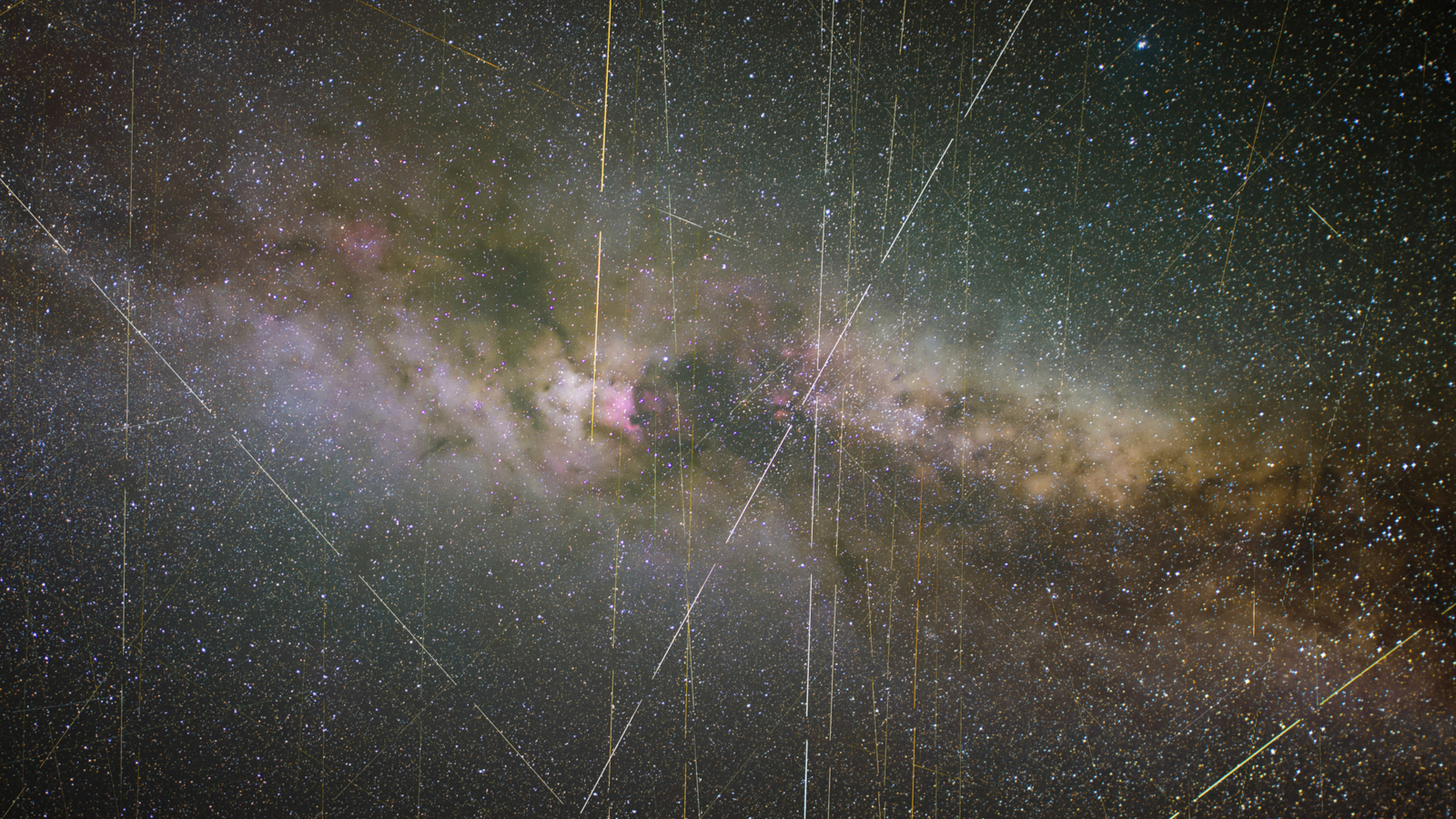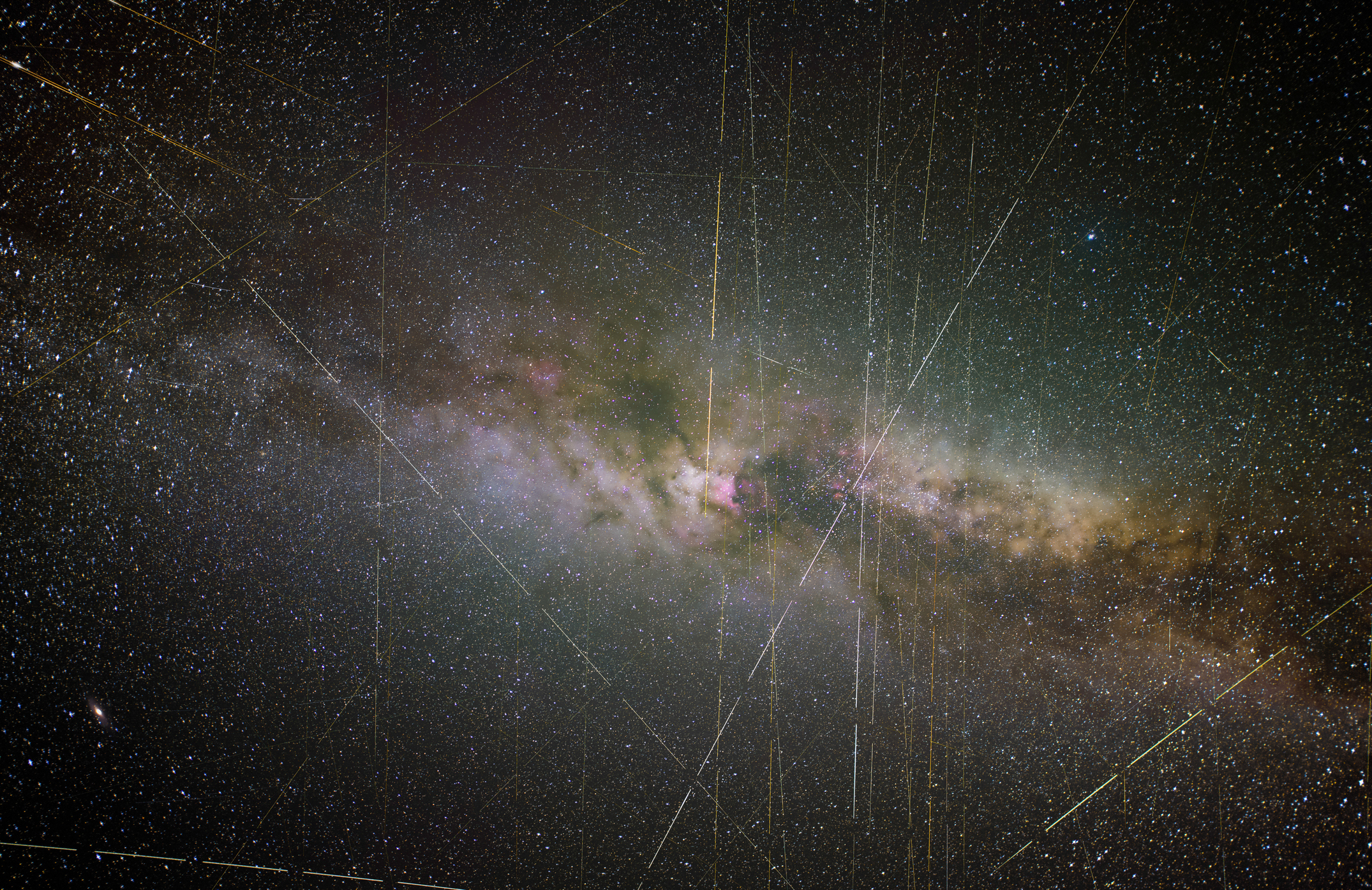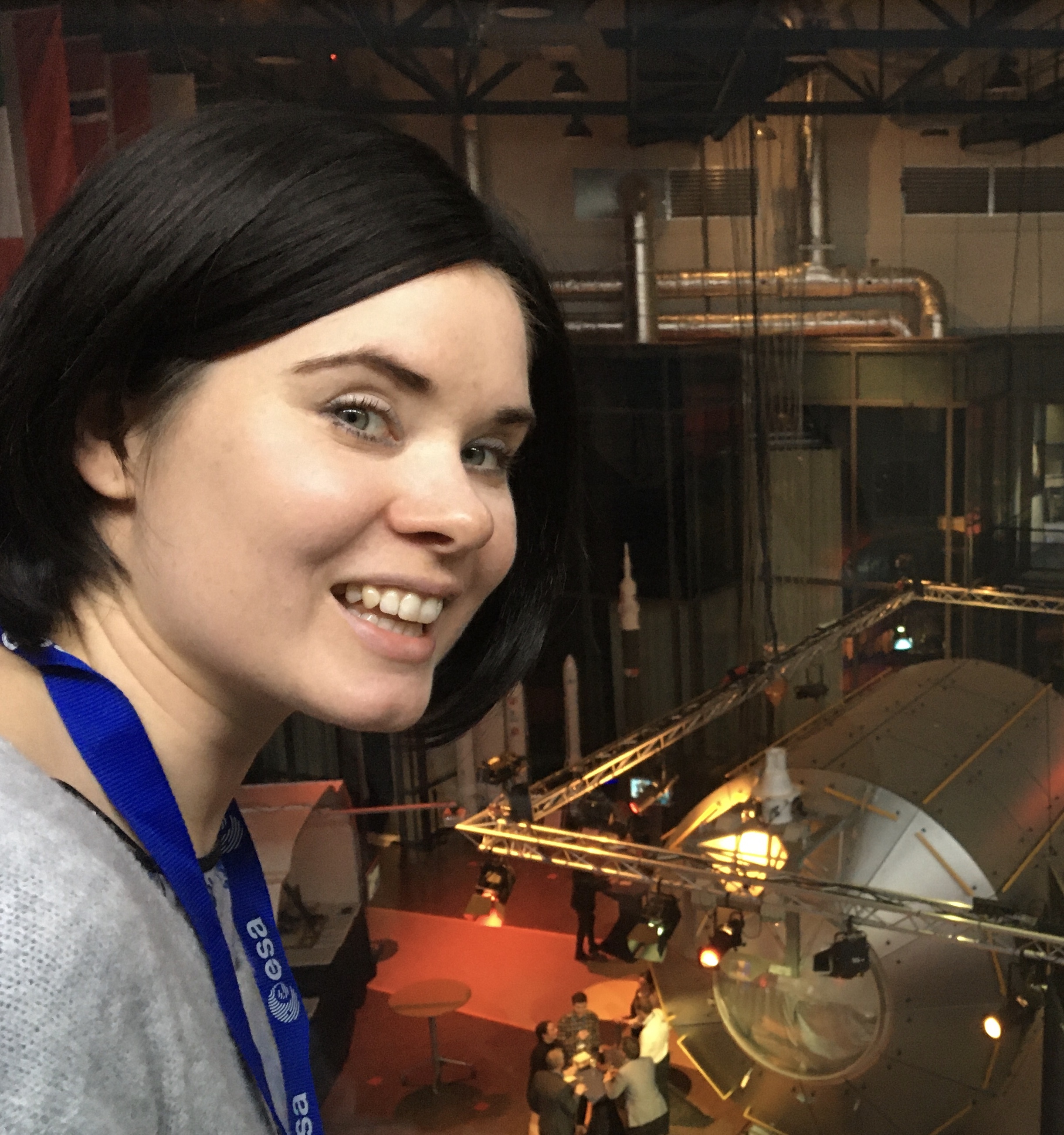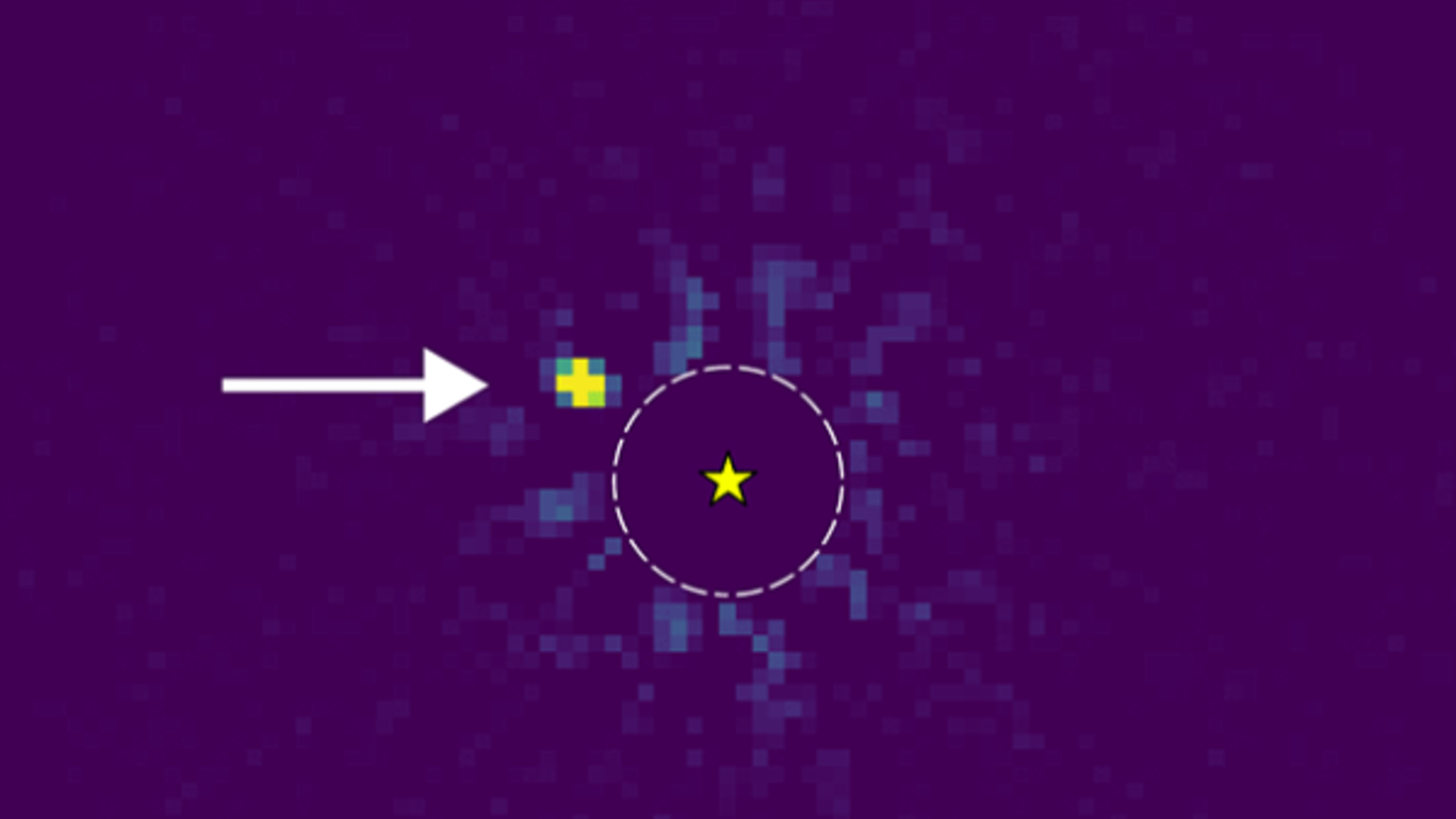Coating satellites with super-dark Vantablack paint could help fight light pollution crisis
Light streaks caused by passing satellites mar images taken by the world's most expensive telescopes. The problem is set to get worse.

A new type of super-black, highly resistant satellite paint promises an affordable fix to the satellite light pollution problem that has marred astronomical research since the recent advent of low-Earth-orbit megaconstellations.
One of these, the internet-beaming Starlink constellation, has been a matter of controversy since the launch of the first batch of its satellites in 2019. The constellation's thousands of spacecraft orbit so low that the sunlight they reflect outshines many stars from our perspective on Earth. And while the sight of a Starlink satellite train might thrill skywatchers, it's a true nightmare to astronomers worldwide.

When the $1.9 billion Vera Rubin Observatory opens its telescopic eyes to the sky later this month, astronomers expect that up to 40% of its images will be degraded or completely ruined by satellite streaks. It's a costly problem that will only become more serious as the number of satellites in orbit is expected to grow to tens of thousands within the next few years. But a new paint being developed in conjunction with astronomers might help. The paint, called Vantablack 310, could reduce the amount of light reflected by satellites in orbit down to just 2% of what is reflected by uncoated satellites, virtually erasing the pesky streaks from telescope images.
According to Noelia Noël, an astrophysicist at the University of Surrey, these satellite streaks will significantly reduce the scientific return on investment that the taxpayer-funded Vera Rubin telescope represents. Noël, who is expected to take part in Rubin's ten-year mission to map the sky in unprecedented detail, has been concerned about the loss of the pristine dark sky for years.
A native of Argentina, Noël grew up in awe of the star-studded southern sky and has been painfully aware of its deterioration. Those concerns led her to establishing a partnership with a University of Surrey spin-off, Surrey NanoSystems, who has been developing ultra black coatings for scientific instruments on satellites. The partnership has now produced a new type of blacker-than-black space paint, which reflects less light than available alternatives and can be easily applied by satellite makers in their clean rooms.
"Over the past five years, humankind has launched more satellites into space than it has done over the previous 60 years," Noël told Space.com. "It's a real problem for astronomy, especially for telescopes like Vera Rubin, which had to significantly change its observing strategy to avoid satellite clusters. So, I wanted to do something about it."
Surrey NanoSystems' previous coatings, although exquisite at reflecting light (the flagship Vantablack High Performance coating absorbs 99.9% of incoming sunrays), were based on delicate nanotechnology that required a technically complicated application process. Once applied, the coating couldn't be touched by a human hand or it would lose its anti-reflective properties.
Breaking space news, the latest updates on rocket launches, skywatching events and more!
"The previous coating was based on a carbon nanotube structure that can't be touched because it would collapse," Kieran Clifford, a materials scientist at Surrey NanoSystems, told Space.com. "We needed something that can be easily handled by engineers at their own facilities."
The new coating is based on a proprietary blend of carbon black, a soot-like form of carbon, mixed with special binders that make the paint resistant against the harsh conditions in near-Earth space. In tests, the new coating outperformed other similar paints currently on the market not just in terms of its light absorption ability but also durability in space, Clifford said.

"We conducted tests that simulated three years in orbit and our coating withstood it with negligible changes whereas other types of space paints completely eroded," said Clifford. "Our coating also offers a better optical performance. Where competitor coatings reflect about 5% of the incoming light, the Vantablack 310 coating only reflects 2% of the light across the visible and near infrared spectrum."
SpaceX has previously experimented with dark paint to reduce the brightness of its satellites, but those experiments provided mixed results. In some cases, the satellites began to overheat due to the amount of absorbed light. The new paint should not cause such problems, Clifford believes, and will make the satellites much less visible than the current Starlinks.
"We know from some simulations that we have done that our coating should make satellites invisible to the naked eye," Clifford said. "That's about magnitude 7 in terms of brightness while Starlink satellites range from magnitude 3 to magnitude 5."
Magnitude is a measure of luminosity of astronomical objects, which is inverse to the object's actual brightness. The lower the magnitude number, the brighter the object is. The magnitude scale is logarithmic, meaning the observed brightness increases exponentially with the decreasing magnitude number.
Surrey NanoSystems and the University of Surrey will test the Vantablack 310 coating in space on the student satellite Jovian 1, which will carry a range of payloads built by British universities to low Earth orbit next year.
"The rear of the satellite's deployable solar panel will be coated with Vantablack 310, and we will be rotating the satellite while making ground-based measurements to observe the changes in brightness," Clifford said.
The company is already in talks with satellite manufacturers. They hope that the ease of the paint's application, its exquisite durability and ability to reduce brightness will inspire them to use it on their satellites in the future.
"I don't want to be too optimistic, but I hope that with this new solution, we might be able to inspire some policy changes," Noël said. "Satellites are an amazing technology, but we also want to make sure that the sky remains accessible to everyone. Large telescopes represent a huge investment, and we want to make sure that it doesn't go to waste."

Tereza is a London-based science and technology journalist, aspiring fiction writer and amateur gymnast. Originally from Prague, the Czech Republic, she spent the first seven years of her career working as a reporter, script-writer and presenter for various TV programmes of the Czech Public Service Television. She later took a career break to pursue further education and added a Master's in Science from the International Space University, France, to her Bachelor's in Journalism and Master's in Cultural Anthropology from Prague's Charles University. She worked as a reporter at the Engineering and Technology magazine, freelanced for a range of publications including Live Science, Space.com, Professional Engineering, Via Satellite and Space News and served as a maternity cover science editor at the European Space Agency.
You must confirm your public display name before commenting
Please logout and then login again, you will then be prompted to enter your display name.
